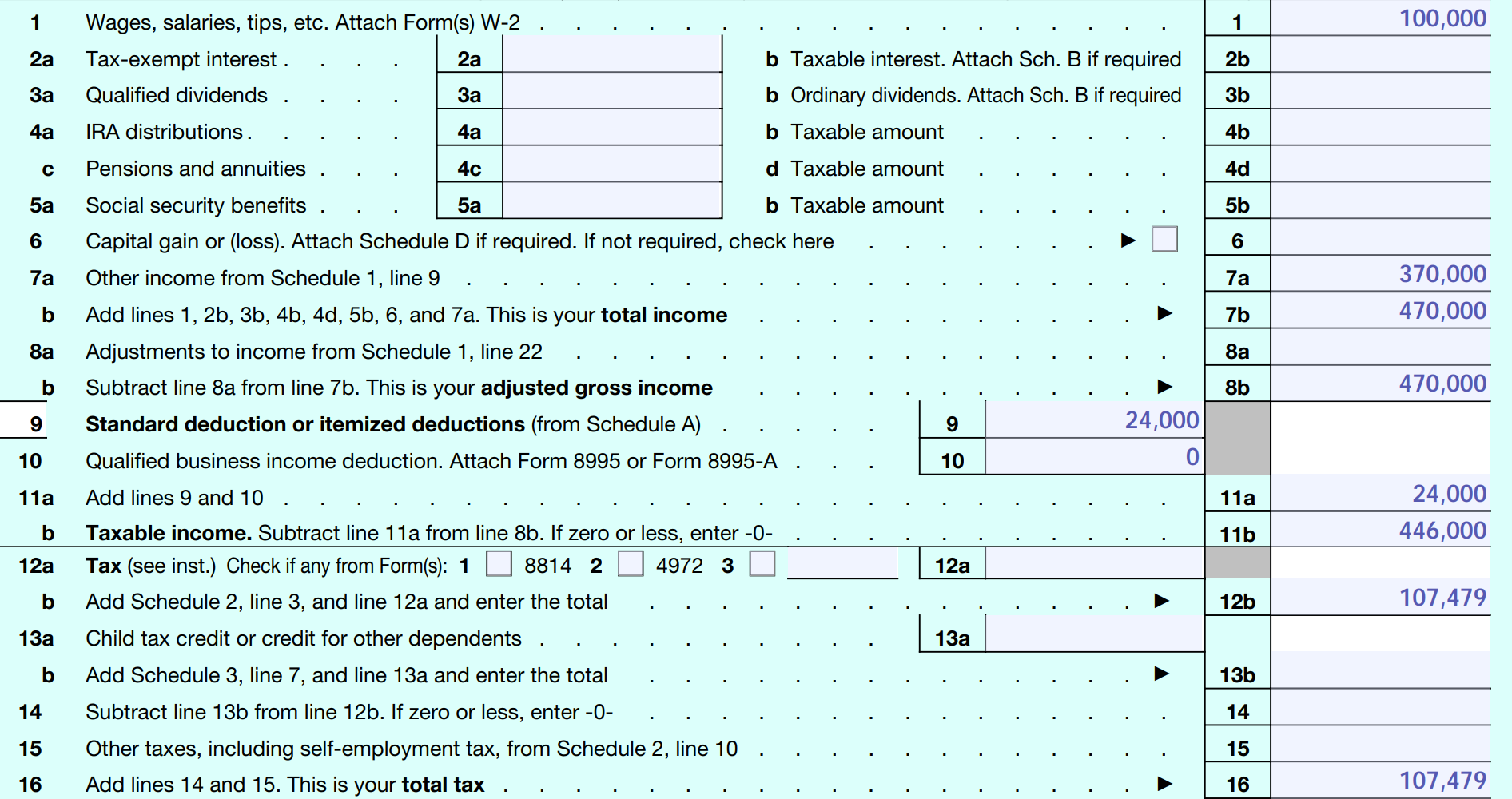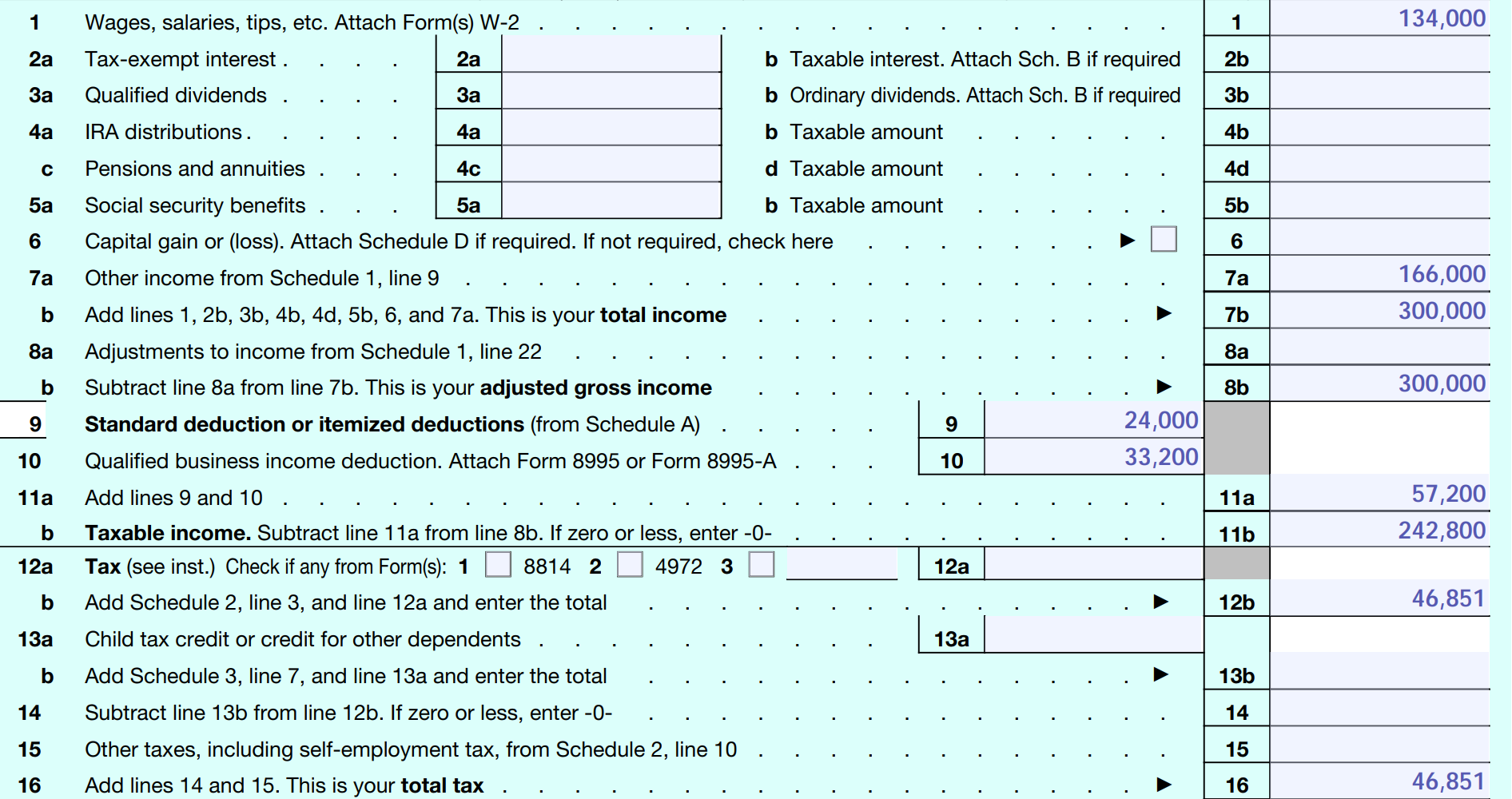It's not what you make, it's what you keep.
Nobody wants to pay more taxes than they must. For self-employed business owners, who pay both sides of employment taxes, this is especially true.
Let’s see if the following strategy can help you hang onto more of the dollars you make. We’ll meet Dr. Abe Erskine who feels he is paying too much in taxes and that he started too late on his retirement savings.
Dr. Abe Erskine

Goal: Reduce Taxes
$107,479! That's what I paid in taxes last year. I need help with that.
Goal: Retirement Savings
I'm not sure I'll have enough to retire the way I want.
Like most business owners, Dr. Erskine invested in his family first, his business second, and his retirement third, or not at all. Only as he neared 60 years of age did he notice that he was not on the path to the golden years he dreamed of.
Practice Name: Vita-Ray Health
Entity Type: LLC filing as a S-Corporation
Employees: 5
Employee Payroll: $200,000
Business’ Fair Market Value: $1,500,000
Income after Business Expenses: $500,000
Taxes Paid Last Year: $107,479
Age: 58
Filing Status: Married Filing Jointly
Retirement Savings: $500,000
Annual Retirement Contribution: $30,000
Desired Monthly Retirement Income at 67: $20,000
Estimated Monthly Retirement Income at 67: $13,266.90
Estimated Monthly Shortfall in Retirement: $6,733.10
Goal: Reduce Taxes
Clearly, Dr. Erskine needed help in accomplishing his goals of reducing his taxes and increasing his retirement savings. So, we went to work and put together a Design Team focused on his success.
Let’s look at how this Design Team assisted him on his taxes.
BEFORE
AFTER
IMPACT
How Did We Do This?
How did his Team manage to provide Dr. Erskine over $60,000 in tax savings? The answer is in the Advanced Retirement Plan Design Strategy that was built with his goals in mind.
Cross-Tested 401(k) Plan
Cash Balance Pension Plan
“Combo”
Plan
Before his Design Team assisted him, Dr. Erskine only had a SEP IRA for his retirement plan. After getting expert help though, he switched over to a combination retirement plan comprised of a Cross-Tested 401(k) Plan + Cash Balance Pension Plan. This change is what allowed Dr. Erskine to lower his taxes by over $60,000 and to help super charge his retirement savings to $200,000. Let’s look at a comparison of these plan designs.
SEP IRA versus "Combo" Plan
No Data Found
The big takeaways here are on taxes and cost. We see above how Dr. Erskine increased his contributions from $30,000 to $200,000 for himself, but let’s look at the cost involved. To fund his SEP IRA for himself at $30,000, Dr. Erskine incurred costs of $21,640. To fund his Combo Plan, Dr. Erskine will have to pay $31,000. That’s a significant increase, but when we look at the impact it makes, it’s no wonder Dr. Erskine was excited to do this. With the SEP IRA, 58% of each dollar going to the plan was his. Now, with his Combo Plan, 89% of each dollar going to the plan is his. While it might appear that this is detrimental to his employees, everyone is getting more dollars than they were before in this new plan design, as shown when you hover over anyone’s slice in the doughnut charts below.
SEP IRA – Employee’s Share of Retirement Benefits
Combo Plan – Employee’s Share of Retirement Benefits
Goal: Retirement Savings
Now that Dr. Erskine has knocked out his first goal of Reducing his Taxes, let’s see how his Design Team did with his second goal of Retirement Savings.
Base Retirement Facts:
Retirement Savings:
$500,000
Business’ Fair Market Value: $1,500,000
Years Until Retirement: 9
Desired Monthly Income at 67: $20,000
Retirement Results:
BEFORE – SEP IRA
Annual Retirement Contribution: $30,000
Estimated Monthly Retirement Income at 67: $13,266.90
Estimated Monthly Shortfall in Retirement: $6,733.10
AFTER – COMBO PLAN
Annual Retirement Contribution: $200,000
Estimated Monthly Retirement Income at 67: $20,054.42
Estimated Monthly Shortfall in Retirement: $0
We can see that with the SEP IRA alone, Dr. Erskine would have fallen significantly short of his retirement goal. However, with the help of his Design Team and an Advanced Retirement Plan Design Strategy built with his goals in mind, he was able to greatly accelerate his qualified savings amount and meet his retirement goal with the use of his very own Combo Plan!
Summary
Dr. Erskine had 2 goals when he reached out, Reduce Taxes and increase Retirement Savings.
The Design Team's Impact
Goal: Reduce Taxes
Goal: Retirement Savings
TAKE ACTION!
Now, it’s your turn! See if a Combo Plan would be a fit for your business. Reach out to us below!
Disclosures
Case studies may not be representative of all clients and are not indicative of future performance or success.
Lorio Wealth Management does not provide tax, accounting, or legal advice. Any tax statements contained herein were not intended or written to be used to avoid U.S. federal, state, or local tax penalties. Clients should contact their own independent advisors as to any tax, accounting, or legal considerations when determining if these statements may be beneficial to their specific circumstances.
Appendix A: Tax Forms
Before - 1040

Before - 1120S

FORM 1040 Line 8b – Adjusted Gross Income
The Tax Cuts and Jobs Act gives business owners the opportunity to unlock a powerful, new tax deduction for pass through businesses. The Section 199A Deduction says that eligible taxpayers may be entitled to a deduction of up to 20 percent of qualified business income (QBI) from a domestic business operated as a sole proprietorship or through a partnership, S corporation, trust or estate.
FORM 1040 Line 10 – Qualified Business Income Deduction
However, for taxpayers with taxable income that exceeds $321,600 for a married couple filing a joint return, or $163,300 for all other taxpayers, the Section 199A deduction is subject to limitations such as the type of trade or business, the taxpayer’s taxable income, the amount of W-2 wages paid by the qualified trade or business and the unadjusted basis immediately after acquisition (UBIA) of qualified property held by the trade or business.
More particulars may be found here: https://www.irs.gov/newsroom/tax-cuts-and-jobs-act-provision-11011-section-199a-qualified-business-income-deduction-faqs.
After - 1040

After - 1120S

Appendix B: Advanced Retirement Plan Design Strategy
SEP IRA Census
| Name | Age | Wage | SEP IRA | % of Benefit |
|---|---|---|---|---|
| Dr. Feel Good | 58 | $280,000 | $30,000 | 58% |
| Cat | 45 | $50,000 | $5,350 | 10% |
| Ana | 40 | $45,000 | $4,815 | 9% |
| Ron | 35 | $40,000 | $4,280 | 8% |
| Eva | 30 | $35,000 | $3,745 | 7% |
| Sam | 25 | $30,000 | $3,210 | 6% |
Combo Plan Census
| Name | Age | Wage | 401(k) + Cash Balance | % of Benefit |
|---|---|---|---|---|
| Dr. Feel Good | 58 | $280,000 | $200,000 | 89% |
| Cat | 45 | $50,000 | $6,200 | 3% |
| Ana | 40 | $45,000 | $5,650 | 3% |
| Ron | 35 | $40,000 | $5,100 | 2% |
| Eva | 30 | $35,000 | $4,550 | 2% |
| Sam | 25 | $30,000 | $4,000 | 2% |
In determining Dr. Abe Erskine’s Retirement Savings, the below Future Value calculation was used to determine the impact of his “BEFORE – SEP IRA” and “AFTER – Combo Plan” results.
Before – SEP IRA
After – Combo Plan
Present Value
Interest
Payment
# of Years
Future Value Result
$500,000
7%
$30,000
9
$1,278,569.27
Present Value
Interest
Payment
# of Years
Future Value Result
$500,000
7%
$200,000
9
$3,314,827.36
In each case, these were added to his Business’s Fair Market Value of $1,500,000. For simplicty, this figure is the value of his business at the time of Dr. Erskine’s retirement. Then, a 4% withdrawal rate was applied. This result was supplemented by his age 67 Social Security Estimates from the Social Security Quick Calc resource. The results of these calculations are shown in the Retirement Savings section above.
Tracking #1-05025756

